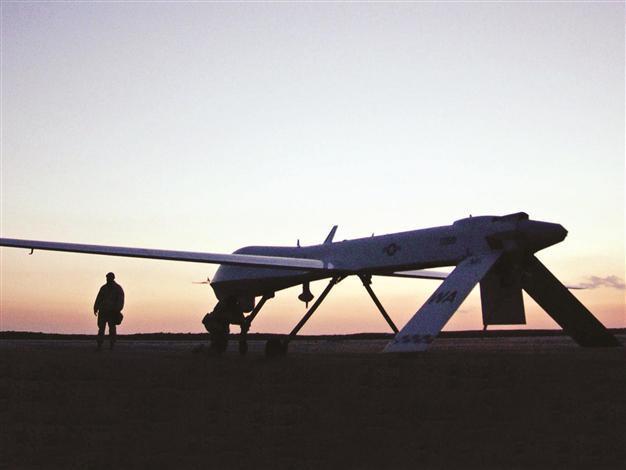US plans long flights with nuclear-powered drones
WASHINGTON

US administration uses drones extensively in Afghanistan and Pakistan in operations against insurgents. AP photo
The United States is planning to build nuclear-powered drones, which will allow an increase in flying time from days to months without refueling, leaving more power available for operating equipment.The project, developed by the U.S. government’s principal nuclear research and development agency Sandia National Laboratories along with defense contractor Northrop Grumman, has not yet reached the building or testing phase, the Guardian has reported.
According to the report, the project sets out to solve three problems associated with drones: insufficient “hang time” over a potential target, lack of power for running sophisticated surveillance and weapons systems, and lack of communications capacity. The research team found that nuclear drones were able to provide far more surveillance time and intelligence information per mission compared to other technologies, and also to reduce the considerable costs of support systems, eliminating the need for forward bases and fuel supplies in remote and possibly hostile areas.
The Obama administration frequently uses drones for clandestine strikes on suspected militants in countries like Afghanistan, Pakistan, Yemen. These strikes particularly strain relations with Pakistan. Pakistan wants them to stop, arguing that such strikes are counter-productive because they kill civilians, exacerbate anti-U.S. sentiment and violate sovereignty.
Public fears
The report said the work had been temporarily halted, due to worries that public opinion would not accept the idea. Such a potentially hazardous technology would have the potential hazard of effectively turning into a so-called dirty bomb in the event of a crash, or of its nuclear propulsion system falling into the hands of militants or unfriendly powers.According to a summary of the research published by the Federation of American Scientists, an independent think-tank, computer-based projections were used to test the concepts.
The summary also stated that the results “were to be used in the next generation of unmanned air vehicles used for military and intelligence applications. ” It added that “none of the results will be used in the near-term or mid-term future,” due to political constraints. The report also compared the future drones with the existing aircraft such as the MQ-9 Reaper, which is used extensively in Afghanistan and Pakistan in operations against insurgents.
The Reaper can presently carry nearly two tons of fuel in addition a similar weight of munitions and other equipment and can stay airborne for around 42 hours, or just 14 hours when fully loaded with munitions.
Using nuclear power would enable drones not only to remain airborne for far longer, but also to carry more missiles or surveillance equipment, and to dispense with the need for ground crews based in remote and dangerous areas.
















